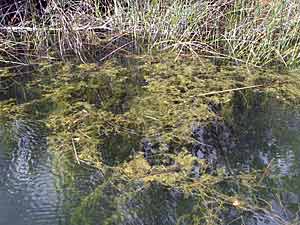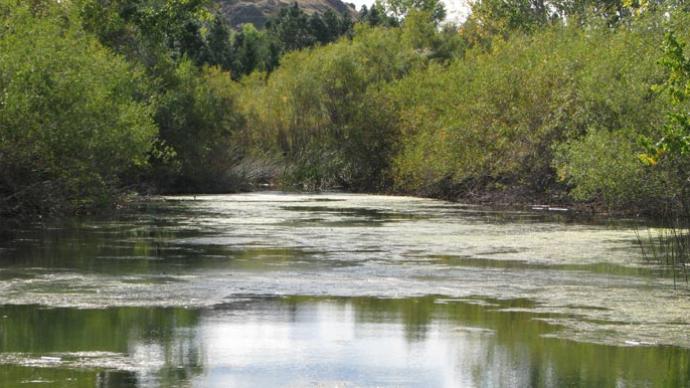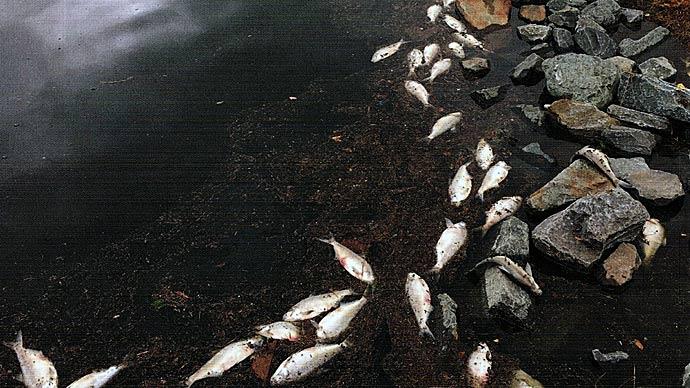
Well, it's that time of year, again, folks. That stringy, scummy, sloppy greenery which serves no practical purpose that dies and floats in mats exactly where you don't want it. Algae.
Believe it or not, there are more than 52,000 species of algae which have been identified worldwide. Some of them are good. As a matter of fact, researchers have figured out that algae in the world's oceans replenish much of the oxygen we breathe. Single cell algae, in your pond, is a good thing, the basis of Nature's food chain.
But, that angel hair stuff or those Brillo-pad looking clumps that hang on your spinnerbait aren't a welcome sight.
Here's the deal. Most algae species in our ponds prefer cool water. In cold water, or warm water, the stuff typically goes away. I've seen a number of cases where algae growth in spring disrupted or delayed the growth of other plants. That may be a good thing, if the "other" plants are "bad" ... those plants such as milfoil or hydrilla.
Every plant has its own window of growth and three things must be present for plants to thrive. They need the right temperature, sunlight and food source. Take away one of these "Big Three" and plants won't exist in a pond. Ever see a ring of plants? That's because sunlight can't penetrate the bottom beyond the deep part of the ring.
Algae has several advantages in the spring. It likes cool water, few other plants can grow right now and algae doesn't have to get its food from the pond bottom. It can take it from the water, in the form of dissolved nitrogen, which the water absorbs from the atmosphere.
As professional biologists, we see some trends in ponds with algae. Most of them have lots of topsoil in the pond bottom, are near livestock and have plenty of shallow water for algae to thrive.
Remember this about algae. It is a relatively "volatile" plant. It won't be there and then, within hours, maybe days, it seems to completely consume an area in a pond. Then, it can be gone just as fast ... without human intervention. Then, in some cases, it seems to come and stay.
So, what to do about it? There are several options. The old tried and true stuff for the ages is an algaecide. Using an algaecide gives immediate gratification, but doesn't solve the problem. These herbicides are contact killers and algae can come back faster than the Arizona Cardinals did. If you choose algaecides, use a chelated form and plan to do it more than once.
Some folks use pond dyes early in the spring to minimize ultraviolet rays from the sun. While this could be a good idea, try to time your dye application where it will dissipate as the water warms, so as not to disrupt natural food chain production in spring.
Other choices are barley straw and microbes. Barley straw is often used to manage algae. While this organic method isn't listed on any agency's "approved" list, barley straw has been used by farmers and ranchers for eons. Microbes won't kill algae, but will feed on dead, decaying algae, effectively disrupting the lifestyle of the green junk. As colonies of bacteria feed on dead algae, the basic food source is tied up for a while.
Don't forget about tilapia. These little fish with the big "S" on their chests, are turning into the heroes of pond management. They love to eat algae and do an adequate job at it, stocked in the right numbers. Just learn about the creature and see what the laws say about them in your neck of the woods. Some say "No" while others say "Sure" and others say "Only if you stock the kind we say you can stock."
While agae is a nuisance, it doesn't need to be a nemesis.
You can manage it...so long as you learn about it.
Reprinted with permission from Pond Boss Magazine


